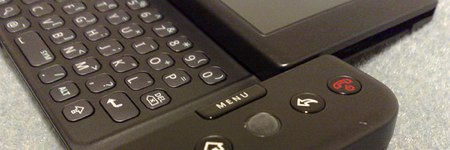Scratch built RFID tags

[nmarquardt] has put up an interesting instructable that covers building RFID tags. Most of them are constructed using adhesive copper tape on cardstock. The first version just has a cap and a low power LED to prove that the antenna is receiving power. The next iteration uses tilt switches so the tag is only active in certain orientations. The conclusion shows several different variations: different antenna lengths, conductive paint, light activated and more.

Running Debian and Android on the G1

[Jay Freeman] has a rather exhaustive tutorial on how to set up a Debian environment on your T-Mobile G1. The first major issue with this is that getting root level access through telnetd is being patched. It certainly is a security issue that needs to be fixed, but a user shouldn’t have to root their own phone to begin with. While the G1 comes with some Linux tools, they’re limited. [Jay]’s goal was to create a familiar Debian environment on the phone. It takes a few tricks, but if you’re familiar with the command line, you shouldn’t have any problems. Debian already has ARM EABI support, so creating a working image isn’t a problem. The image file is stored on the SD card and mounted using the loopback device. The G1’s kernel has module support turned on, so [Jay] created an ext2 and unionfs kernel modules. [Benno Leslie]’s Android version of busybox is used to perform the actual mounting. Once mounted, you just need to chroot into the environment to start playing with native Linux apps. [Jay] takes this a step further by using unionfs to make the Android and Debian environments share the same root. This is really a great how-to and it’s nice to know that modules can be added to the kernel.
[photo: tnkgrl]
[via Hackszine]

You received this email because you are subscribed to the real_time feed for http://hackaday.com/feed/. To change your subscription settings, please log into RSSFWD.
No comments:
Post a Comment